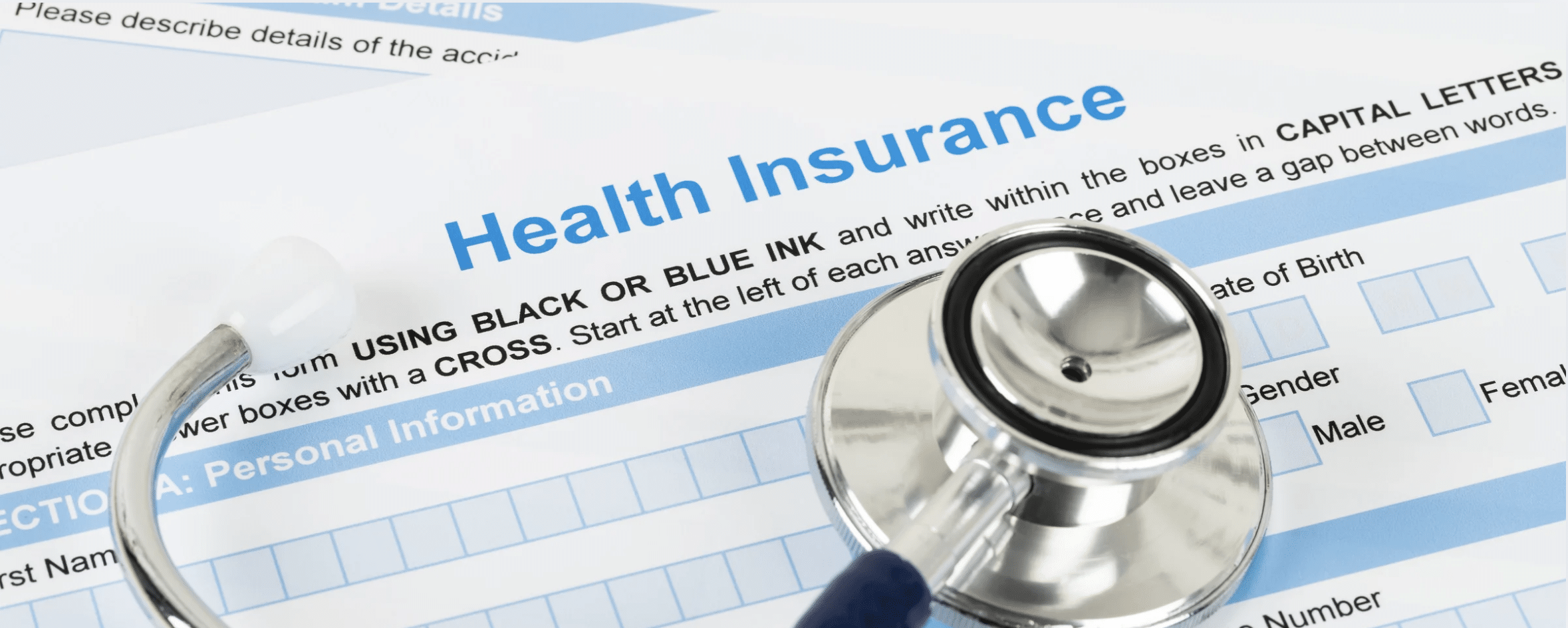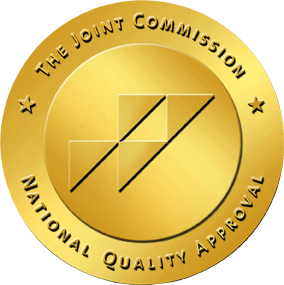Trauma-related disorders are mental health conditions that develop after experiencing or witnessing distressing or life-threatening events. These disorders include well-known conditions like post-traumatic stress disorder (PTSD) and complex post-traumatic stress disorder (C-PTSD), as well as other trauma-related mental health issues. Trauma can result from many types of events, such as abuse or neglect, domestic violence, military combat, natural disasters, serious accidents, or childhood trauma. The symptoms often involve intense memories, emotional distress, and difficulty coping with daily life. Understanding trauma-related disorders and seeking treatment from mental health professionals can help individuals heal and regain control over their lives. Let’s explore the different types of trauma, signs and symptoms, and available treatment options to support recovery.
What Are Trauma and Stress-Related Disorders?
Trauma and stress-related disorders are a key focus for mental health professionals and anyone affected by these conditions. These disorders can range from severe cases like post-traumatic stress disorder (PTSD) to more common struggles such as ongoing stress. Understanding the different types of trauma and stress-related disorders involves learning about their causes, symptoms, and treatment options. Gaining this knowledge can empower those experiencing trauma to find the right support and resources needed to heal and improve their quality of life.
Trauma-Related Disorders
Traumatic experiences often involve directly facing danger or witnessing a life-threatening situation, like a natural disaster, serious accident, violence, or war. These events can be very difficult to process and may cause high levels of anxiety.
It’s normal to feel overwhelmed, shocked, or numb right after a traumatic event. But if feelings of fear, helplessness, or distress continue for a long time and start to affect daily life, this may be a sign of a trauma-related disorder. Recognizing these lasting reactions is important for getting the right help and support.
Common Causes of Trauma
Trauma can happen because of many different events that cause physical or emotional harm. These experiences can deeply affect a person’s mental health and well-being. Some common causes of trauma include:
- Experiencing or witnessing violence, such as assault or domestic abuse
- Being involved in serious accidents, like car crashes
- Living through natural disasters, such as floods or earthquakes
- Military combat or war-related experiences
- Childhood abuse or neglect – (ACE’s)
- Losing a loved one in a sudden or traumatic way
Each person reacts differently to trauma, but these events often lead to lasting emotional challenges.
Types of Trauma-Related Disorders
Trauma-related disorders are mental health conditions that develop after a person experiences traumatic events. The most well-known is post-traumatic stress disorder (PTSD), which can happen after a single traumatic event. Complex post-traumatic stress disorder (C-PTSD) often results from repeated or long-lasting trauma, such as ongoing abuse or neglect. Other trauma-related disorders may also develop depending on the type and severity of trauma experienced. Understanding these disorders helps guide treatment and support for those affected by traumatic experiences.
Post-Traumatic Stress Disorder (PTSD)
Post-traumatic stress disorder (PTSD) occurs after a person experiences, witnesses, or faces a traumatic event and continues to relive that experience over time. This disorder develops from intense emotional distress caused by events like natural disasters, combat, or other highly stressful situations.
PTSD can be classified as acute when symptoms last less than three months, or chronic when they persist for three months or longer. Sometimes, symptoms don’t appear right away and may take weeks or even months-sometimes six months or more-to show up after the traumatic event. This delayed onset can make recognizing and treating PTSD more challenging.
Common Symptoms of PTSD
Post-traumatic stress disorder (PTSD) is a serious trauma-related condition that can develop after experiencing or witnessing a traumatic event. People with PTSD often face a range of symptoms, including:
- Intrusive memories or flashbacks of the trauma
- Nightmares and trouble sleeping
- Intense emotional reactions like anger or mood swings
- Difficulty controlling emotions and feeling anxious or panicked
- Problems concentrating and negative thinking
- Avoiding places, people, or activities that remind them of the trauma
- Feeling isolated or withdrawing from others
These symptoms can interfere with daily life, but mental health professionals can provide support and treatment to help manage them.
DSM-5 Criteria for PTSD
The Diagnostic and Statistical Manual of Mental Disorders (DSM-5) outlines specific criteria for diagnosing PTSD, grouped into several categories:
- Exposure to Trauma: Directly experiencing, witnessing, or learning about a traumatic event involving death, injury, or violence.
- Re-experiencing: Recurring distressing memories, flashbacks, or nightmares related to the trauma.
- Avoidance: Efforts to avoid thoughts, feelings, or reminders of the traumatic event.
- Negative Changes in Thoughts and Mood: Difficulty remembering parts of the trauma, persistent negative beliefs about oneself or the world, feelings of guilt or shame, loss of interest in activities, or emotional numbness.
- Arousal and Reactivity: Increased irritability, reckless behavior, heightened startle response, trouble concentrating, and sleep problems.
- Duration and Impact: Symptoms last more than one month and cause significant problems in daily life.
- Exclusion: Symptoms are not caused by substance use or other medical conditions.
Some individuals may also experience dissociative symptoms, such as feeling detached from themselves or their surroundings. Early diagnosis and treatment are important for recovery.
Complex Post-Traumatic Stress Disorder (C-PTSD)
Complex post-traumatic stress disorder, or C-PTSD, is recognized as a trauma-related condition that differs from traditional PTSD. According to the International Classification of Diseases (ICD-11), C-PTSD involves not only the core symptoms of PTSD but also additional challenges related to emotional regulation, self-identity, and relationships. Unlike PTSD, which often follows a single traumatic event, C-PTSD usually develops after prolonged or repeated trauma, such as ongoing abuse, neglect, or captivity.
Signs and Symptoms of C-PTSD
People with C-PTSD often struggle with:
- Difficulty managing intense emotions, leading to irritability, anger, or emotional numbness
- Negative beliefs about themselves, such as feelings of shame, guilt, or worthlessness
- Trouble forming or maintaining close relationships due to distrust and emotional withdrawal
ICD-11 Criteria for C-PTSD
The ICD-11 defines C-PTSD by the presence of PTSD symptoms, such as flashbacks, avoidance, and a sense of threat, along with disturbances in self-organization, which include emotional difficulties, a negative self-view, and relationship problems. While the DSM-5 does not currently list C-PTSD as a separate diagnosis, it has broadened the criteria for PTSD to include symptoms seen in complex trauma.
Emotional Dysregulation
One of the main differences between PTSD and C-PTSD is the difficulty in controlling emotions. Individuals with C-PTSD may experience overwhelming feelings such as anger, sadness, or fear that are hard to manage. This can lead to behaviors like depression, self-harm, substance abuse, or suicidal thoughts. These emotional struggles are often more intense and persistent than those seen in PTSD.
Negative Self-Image
C-PTSD can deeply affect how a person views themselves. Many feel a strong sense of shame, guilt, or failure connected to their trauma. This negative self-concept can lower self-esteem and make it hard to trust oneself. These feelings may lead to destructive behaviors as a way to cope, and survivors often find it challenging to build healthy relationships.
Relationship Difficulties
People with C-PTSD frequently have trouble trusting others and may feel unsafe in social situations. Because complex trauma often begins in childhood, it can disrupt the ability to form secure, supportive relationships later in life. Those affected may avoid reminders of trauma, struggle with emotional closeness, or feel disconnected from others. This can result in isolation, difficulty setting boundaries, or staying in unhealthy relationships to avoid rejection.
Understanding C-PTSD helps mental health professionals provide better support tailored to the unique needs of those who have experienced prolonged trauma. Treatment focuses not only on managing PTSD symptoms but also on improving emotional regulation, self-worth, and interpersonal skills to promote healing and recovery.
PTSD Vs C-PTSD
The main difference between post-traumatic stress disorder (PTSD) and complex post-traumatic stress disorder (C-PTSD) lies in the duration and nature of the trauma experienced. PTSD usually develops after a single traumatic event, such as a car accident, combat, or natural disaster. In contrast, C-PTSD often results from prolonged or repeated trauma, like ongoing abuse, neglect, or domestic violence.
Because complex post-traumatic stress disorder involves long-term trauma, it generally requires more intensive and extended mental health treatment. Symptoms of C-PTSD can persist for months or even years, making recovery a longer process. While both PTSD and C-PTSD may share similar signs and symptoms, the length and cause of trauma help mental health professionals distinguish between the two. Understanding these differences is important for creating an effective treatment plan tailored to each individual’s needs.
Dangers of PTSD and C-PTSD
Symptoms of PTSD can include feelings of confusion, disorientation, and intense fear. When these reactions become severe, they may disrupt a person’s ability to function safely in daily life. For instance, someone might suddenly lose awareness of their surroundings and respond with aggressive behavior, which could put themselves or others at risk. Because of this, it’s important to recognize the signs of both PTSD and complex PTSD (C-PTSD) and seek help from mental health professionals promptly.
Complex PTSD (C-PTSD) often presents with more subtle symptoms that can be harder to identify without knowledge of trauma. These may include feeling disconnected from reality, struggling to trust others or build relationships, and having strong fight, flight, or freeze reactions to perceived dangers. People with C-PTSD also frequently face challenges in managing their emotions, feeling overwhelmed by stress, and may experience thoughts of self-harm or suicide due to the long-lasting effects of trauma.
Self-Assessment: Am I Addicted?
"*" indicates required fields
Contact Us
Ready to Get Help? Get in Touch Today.
"*" indicates required fields
Stress-Related Disorders
Stress-related disorders are common mental health conditions that arise from prolonged or intense stress. These disorders can vary widely in how they affect people and how long they last. Some stress-related disorders are short-term, while others become chronic and persist for months or even years.
Chronic stress happens when stress builds up over a long period due to factors like work pressure, difficult life events, family problems, or ongoing health issues. This ongoing stress can lead to both mental and physical health problems, including anxiety, depression, trouble sleeping, fatigue, headaches, and a weakened immune system. Recognizing the impact of stress and seeking appropriate mental health treatment is important to prevent these symptoms from worsening.
Common Causes of Stress
Stress-related disorders often develop when people face ongoing or intense stress from their environment or life experiences. Factors like an abusive childhood, a toxic workplace, or difficult relationships can create high-stress situations that challenge a person’s ability to cope. Those with certain genetic traits or psychological vulnerabilities may be more likely to develop stress-related mental health conditions under these pressures.
Some common causes of stress include:
- Adverse childhood experiences (ACEs): Early trauma, neglect, or lack of emotional support can affect how a person handles stress later in life.
- Exposure to trauma: Direct or indirect experiences such as accidents, violence, natural disasters, or military combat.
- Stressful environments: High-pressure jobs, unstable home life, or ongoing conflict can increase stress levels.
- Chronic illness: Long-term health problems, including mental health disorders like depression or anxiety, can worsen stress.
- Genetic and biological factors: Some people inherit a predisposition that makes managing stress more difficult.
Understanding these causes helps mental health specialists develop effective treatment plans tailored to each individual’s needs. Recognizing stress triggers early can also prevent the development of more serious mental health disorders.
Types of Stress-Related Disorders
Stress-related disorders develop after a person experiences a traumatic or highly stressful event. These disorders can affect emotions, behavior, and daily functioning in different ways. Understanding the types of stress-related disorders helps in recognizing symptoms and seeking the right support.
- Acute Stress Disorder (ASD): Acute stress disorder happens soon after a traumatic event and lasts for a short time, usually from a few days up to a month. People with ASD may feel shocked, confused, or anxious, and have trouble coping with what happened. If symptoms continue beyond a month, it might develop into post-traumatic stress disorder (PTSD).
- Reactive Attachment Disorder (RAD): Reactive attachment disorder is usually diagnosed in children who have had trouble forming healthy emotional bonds with caregivers early in life. These children may seem withdrawn, avoid comfort, and have difficulty trusting others, often because of neglect or inconsistent care during their early years.
- Disinhibited Social Engagement Disorder (DSED): Disinhibited social engagement disorder also affects children who have experienced early trauma or neglect. Unlike RAD, children with DSED may be overly friendly and willing to interact with strangers, showing little caution or hesitation in new social situations. This behavior reflects difficulties in forming safe attachments.
Each of these disorders reflects different ways that stress and trauma can impact mental health, especially in children, and highlights the importance of early intervention and support from mental health professionals.
Negative Effects of Chronic Stress
When people face intense stress or deal with it over a long time, both their mental and physical health can worsen. Stress disorders often bring feelings of guilt or shame, and many also experience burnout, a deep sense of exhaustion and being overwhelmed with no relief in sight.
Because of this, it can become hard to manage everyday responsibilities at work and home. Some individuals may turn to harmful behaviors like alcohol or drug use as a way to handle the heavy stress they are experiencing. Recognizing these signs early is important to get the right support and avoid further harm.
FAQ about Trauma
Here are some common questions and clear answers to help you understand trauma and its effects.
What does unprocessed trauma look like?
Unprocessed trauma often shows up as intense anxiety, flashbacks, nightmares, emotional numbness, or avoidance of reminders related to the trauma. It can also cause physical symptoms like headaches or rapid heartbeat.
How to tell if someone is traumatized?
Signs include sudden mood changes, withdrawal from others, difficulty trusting, hypervigilance (always being on guard), and trouble managing emotions like anger or fear.
What are physical signs of unhealed trauma?
Physical signs can include chronic pain, headaches, stomach problems, rapid heartbeat, sweating, and difficulty sleeping.
How does unhealed trauma show up in relationships?
It may cause trouble trusting others, emotional distance, fear of closeness, or difficulty maintaining healthy boundaries.
What does trauma-blocking behavior look like?
This can appear as avoiding certain places or people, emotional numbness, shutting down during stressful moments, or using substances to escape feelings.
What is trauma splitting?
Trauma splitting is when someone sees people or situations in extremes, like all good or all bad, often due to difficulty processing complex emotions linked to trauma.
Treatment For Trauma at Vogue Recovery Center
At Vogue Recovery Center, trauma treatment is integrated into a comprehensive approach that addresses both mental health disorders and substance use. Our trauma-informed care includes evidence-based therapies like trauma-focused CBT, EMDR, and cognitive processing therapy. These treatments help clients process painful memories and develop healthy coping skills. With personalized treatment plans and compassionate support from mental health professionals, Vogue Recovery Center guides individuals toward healing and lasting recovery in a safe, supportive environment.
Treatment for Trauma Disorders Near You
If you’re seeking treatment for trauma disorders close to home, Vogue Recovery Center in Las Vegas, NV, offers specialized mental health programs. Vogue provides effective support for those recovering from PTSD, complex trauma, and related mental health conditions. Contact our team today to start a personalized treatment plan designed to help you heal and recover.
Questions about treatment options?
Our admissions team is available 24/7 to listen to your story and help you get started with the next steps.
References:
- Post-traumatic stress disorder (PTSD) – SAMHSA
- Post-traumatic stress disorder (PTSD) – Symptoms and causes – Mayo Clinic
- What is Trauma? What to Know – Medical News Today
- https://www.healthline.com/health/mental-health/trauma-related-disorders
- Post-Traumatic Stress Disorder – National Institute of Mental Health (NIMH)
- DSM-5 Diagnostic Criteria for PTSD – NIH
- Post-traumatic stress disorder – Harvard Health
- ICD-11 complex post-traumatic stress disorder: simplifying diagnosis in trauma populations – Cambridge University Press
- The memory and identity theory of ICD-11 complex posttraumatic stress disorder – PubMed
- PTSD and CPTSD in the new ICD-11 – A latent profile analysis – Science Direct
- Complex PTSD – PTSD: National Center for PTSD
- Psychological interventions for ICD-11 complex PTSD symptoms: systematic review and meta-analysis – ptsd.va.gov
- Literature on DSM-5 and ICD-11 – ptsd.va.gov
- Differences between ICD-11 PTSD and complex PTSD on DSM-5 section III personality traits – PMC
- ICD-11
- CPTSD (Complex PTSD): What It Is, Symptoms & Treatment – Cleveland Clinic
- Complex PTSD – Post-traumatic stress disorder – NHS
- How Complex PTSD (C-PTSD) Differs from PTSD – verywellmind.org
- Acute and Chronic Trauma – NIH
- Adverse Childhood Experiences (ACEs) | CDC
- Adverse Childhood Experiences (ACEs) & Childhood Trauma
- Acute Stress Disorder – Healthline
- Types of Stress Disorders – Medical News Today
- Chronic Stress- Yale Medicine
- Overview of Trauma-and-Stressor-Relsted Disorders – MSD Manual
- Stress-Related Disorders – Science Direct
- 3 Signs You May Have Unprocessed Trauma – Psychology Today
- Stress symptoms: Effects on your body and behavior – Mayo Clinic
- How complex PTSD can affect relationships – Medical News Today
- Reactive Attachment Disorder – Science Direct
- Disinhibited Social Engagement Disorder in Early Childhood Predicts Reduced Competence in Early Adolescence – PubMed
Dr. Anjali Talcherkar
Latest posts by Dr. Anjali Talcherkar (see all)
- How Long Does Substance Abuse Counseling Take? - June 9, 2025
- What Is Overamping? Understanding a Crystal Meth Overdose - June 9, 2025








